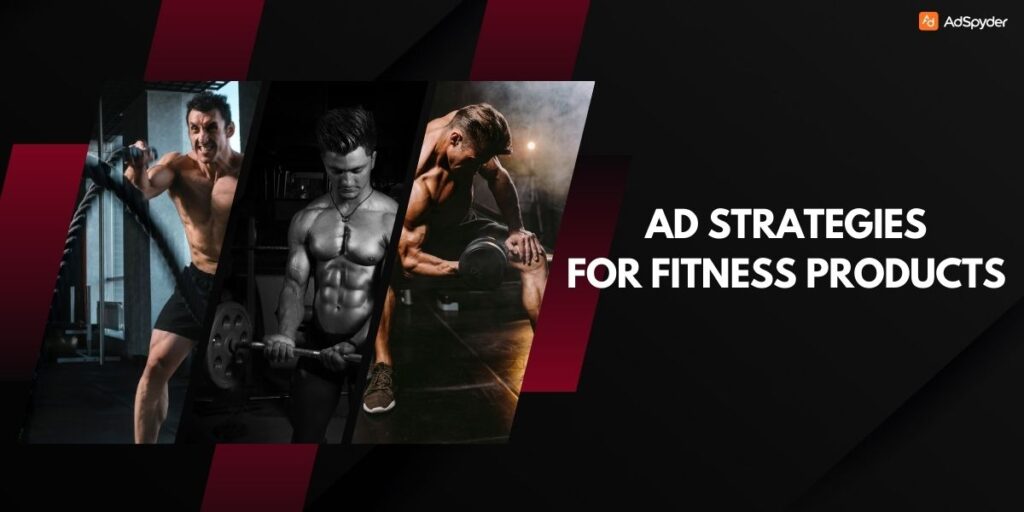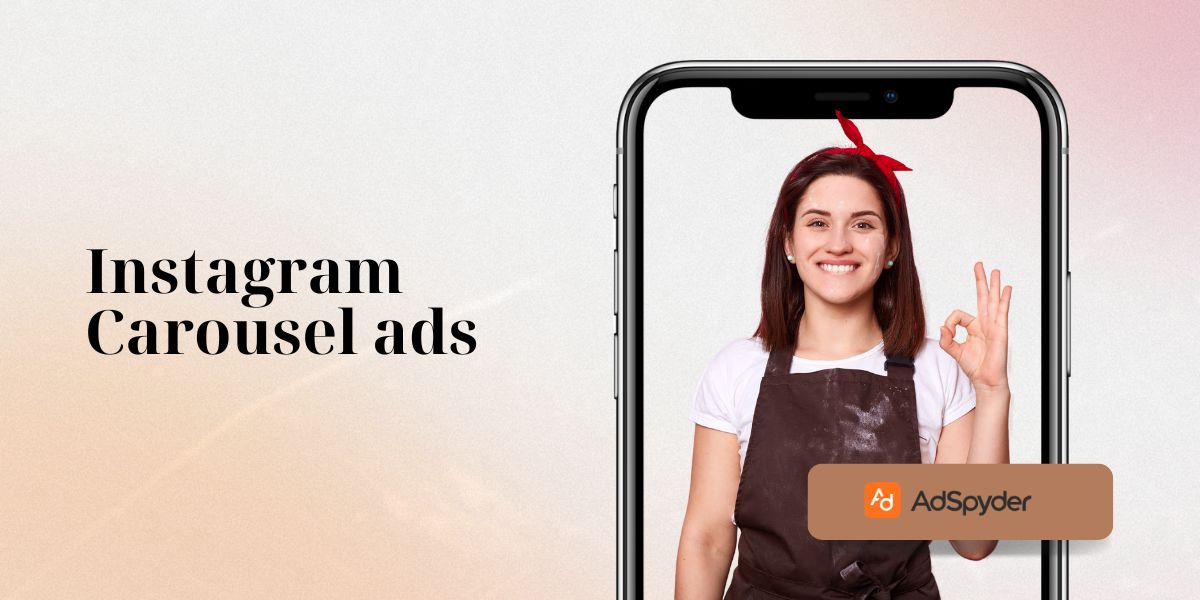The fitness market has experienced enormous growth, with more consumers spending money on home gym equipment, supplements, activewear, and online fitness programs. But with the growing competition, fitness brands must have strategic, data-driven ad campaigns to compete and get people to buy.As opposed to generic product promotion, fitness product promotion needs a mix of emotional appeal, credibility, and performance-based messaging. People don’t purchase fitness products; they invest in an improved lifestyle and enhanced physical performance. This necessitates creating ads that educate, motivate, and convert. In this three-part guide, we will examine some of the Ad Strategies for Fitness Products :
Ready to Elevate your Marketing Strategy?
- Digital advertising (on Facebook, Instagram, Google Ads) with a focus on targeted strategies.
- Influencer partnerships and content marketing.
- Performing tracking and optimization and pitfalls to avoid.
Digital Advertising Strategies for Fitness Products

The best fitness products’ digital advertising strategies rely on more than just ads; they utilize the power of social media, influencer partnerships, data and personalized content to form real connections with the audience. If it’s workout equipment, supplements, digital fitness programs, activewear, or everything in between, the right digital strategy can propel a brand in a competitive space.
Understanding the Fitness Consumer Mindset
Before launching ad campaigns, it’s important to understand who your ideal customers are and what motivates them. Fitness consumers typically fall into these categories:
- Beginners looking for accessible fitness solutions.
- Serious athletes & gym-goers focused on performance.
- Home fitness enthusiasts want convenience.
- Weight loss & transformation seekers.
Key Purchase Drivers for Fitness Consumers
For fitness consumers, purchasing decisions are based on the ability of a product or service to meet personal fitness goals, fit their lifestyle, and compete in a crowded market. Here are a few key purchase drivers:
- Product Efficiency: Does it work?
- Social Proof: Is anyone else getting results?
- Ease of Use: Is it convenient to use?
- Credibility: Is it supported by trainers, athletes or experts?
Align messaging about ads with consumer drivers list that generate results for fitness brands that resonate with consumers emotionally to produce ads that resonate with consumers.
Facebook & Instagram Ads for Fitness Products
The visual storytelling, influencer partnerships, and retargeting capabilities make them incredibly potent for fitness brands.
A. Best Facebook & Instagram Ad Formats
While advertising fitness products on Facebook and Instagram, selecting the most appropriate ad format is important in grabbing attention, activating audiences, and pushing conversions. Below is an overview of the most suitable ad formats for fitness brands:
1. Video Ads (Best for Storytelling & Engagement)
- Why It Works: Fitness is a visual, activity-driven niche (showing the product in action leads to higher engagement).
- For example, a fitness tracker brand might run an ad that’s 30 seconds long that shows a runner who is tracking their pace, heart rate, and calories burned.
- Optimization Tip: Include a strong, clear. CTA at the end (to genuinely motivate your reader to respond, subscribe, etc.
2. Carousel Ads (Best for Product Benefits & Features)
- Why It Works: It gives brands a chance to show off many aspects of an offering in one advertisement.
- Example: A protein supplement brand utilizes a carousel to showcase:
- Slide 1: High-protein, low-sugar formula.
- Slide 2: Fitness results from what users posted before and after.
- Slide 3: This is a limited-time offer.
- Optimization Tip: Use bold text overlays with high contrast on each slide so viewers can easily read your text.
3. Retargeting Ads (Best for Converting Interested Shoppers)
- Why It Works: Plenty of users visit product pages without purchasing straight away. Retargeting gives them a second look at the product.
- As an example, a home workout equipment brand retargets users who looked at a product with something like this:
- “Still thinking about it? Hurry and finish your purchase today to get 10% off!”
- Optimization Tip: Use social proof (reviews, testimonials, or “X people bought this today”) to foster a sense of urgency.
Google Ads for High-Intent Fitness Shoppers

With Google Ads, you can target consumers already searching for fitness solutions, which makes them a key component in bottom-funnel conversions (i.e., conversions already ready to purchase).
Related – Wellness Brand Advertising Campaigns
A. Best Google Ad Strategies for Fitness Products
Here’s a breakdown of the leading Google Ad strategies for fitness products:
1. Google Search Ads (Best for Capturing High-Intent Shoppers)
When you search for something on Google, search ads are displayed above the organic results. Advertisers place bids on keywords that are relevant to their products, and Google’s algorithm decides which ads to display based on the bid amount, the quality of the ad, and its relevance.
- Why It Works: It drew in users looking for one specific solution around fitness (eg, ”best home workout equipment”).
- For example, a yoga mat brand ran ads targeting searches for “non-slip yoga mats” with the ad copy: “Best-Rated Non-Slip Yoga Mat — Free Shipping. Shop Now”.
- Optimizing Tip: Use the keywords that indicate strong purchase intent, like:
- Buy, Deals, Reviews, Low Price, and Free Delivery.
2. Google Shopping Ads (Best for Direct Product Sales)
Google Shopping Ads are an extremely impactful method of promoting fitness products, displaying on Google search results pages and providing you with that ideal visibility of the product to potential buyers when they are seeking goods to purchase.
- How It Works: Show product images, ratings, and prices for the website directly in Google search results.
- For instance, when users search for “best protein for muscle gain”, a fitness supplement brand may show Google Shopping Ads containing whey protein, pricing, and customer ratings.
- Optimization Tip: Use keyword-rich product titles (think “Organic Vegan Protein Powder – 20g Protein, Low Carb”).
Leveraging Influencer Marketing for Fitness Brands

Social proof and expert recommendations drive consumers to buy fitness products. Endorsements from influencers are authentic, examples are visual, and you can engage communities, so influencer marketing is one of the best ways to market fitness brands.
Why Influencers Are Essential for Fitness Product Advertising
Here’s what makes influencers so important for fitness product marketing:
- Social Proof: Real experiences carry more weight than brand promises.
- Higher Engagement Rates: Since users are looking to Instagram, TikTok, and YouTube for workout tips and product recommendations, fitness content is one of the top-performing niches.
- Brand awareness & virality: Recommended by fitness influencers who have highly engaged communities.
Choosing the Right Influencers for Your Fitness Brand
| Influencer Type | Follower Range | Best For | Example |
| Nano-Influencers | 1K – 10K | Well-connected, specialized audiences | A personal trainer, advertising resistance bands. |
| Micro-Influencers | 10K – 100K | Building credibility & trust | A nutritionist suggests a vegan protein powder. |
| Macro-Influencers | 100K – 1M | Expanding reach & sales | A fitness YouTuber reviewing accessories for the gym. |
| Celebrity Influencers | 1M+ | Hope to gain mass exposure, brand authority | A pro athlete endorsing workout supplements. |
Best Influencer Campaigns for Fitness Products
Influencer marketing is amongst the most potent tools in the fitness industry, as authenticity and trust actually dictate purchasing decisions. Below are some of the best influencer campaign ideas for fitness products, along with examples to inspire your strategy.
1. Sponsored Product Reviews
Here are some top tips for successful sponsored reviews:
- Collaborate with trainers, body-positive athletes, or fitness gurus to provide loyal, in-depth product reviews.
- For example, a resistance band company works with a trainer who gives a full body workout using the bands and provides a special discount code for followers.
- Product Integration In “A Day in the Life”
The problem with fitness content, however, is that it’s often somewhat canned; incorporating fitness products into an “A Day in the Life” is a fresh way to show products in real, relatable contexts.
- Influencers naturally demonstrate your product in their everyday fitness routine.
- For instance, a pre-workout supplement brand works with a fitness YouTuber who documents their morning workout, showcasing how they use the product before their training.
- What You Can Expect: Challenges & Giveaways
Here, how to market fitness products, possible Challenges and Giveaways
- Run 30-day fitness challenges where influencers participate and invite followers.
- For instance, a protein shake brand might host a #30DayTransformation contest, offering whoever made the best transformation a year’s worth of free product.
Must See – Wellness Brand Advertising Campaigns
Content-Driven Campaigns for Ad Strategies for Fitness Products

Content marketing is essential for fitness brands since customers need to see evidence, pick up best practices, and know how a product integrates into their fitness regimen.
Best Fitness Content Types for High Engagement
| Content Type | Best For | Example |
| Workout Guides | Teaching product use | “10-Minute Resistance Band Glute Workout” |
| How-To Videos | Showcasing Benefits of Fitness Products | “Adjustable dumbbells: How to use for strength training”. |
| Fitness Myths vs. Facts | Training & busting industry myths | “Do You Actually Need Supplements to Build Muscle?” |
| Success Stories | Inspiring customers & creating trust | “How This Newbie Lost 20lbs Using Our Home Gym Kit” |
YouTube & TikTok for Fitness Product Marketing
While both YouTube and TikTok are great platforms for marketing fitness products, each has its own set of benefits, and they appeal to different audience habits and content consumption patterns. Brands can use these differences to optimize their strategies for maximum effect.
YouTube Video Marketing (Best for Long-Form Content & SEO Traffic)
With more than 2 billion logged-in monthly users, YouTube has a great potential for brands to connect with the fitness audience across the globe.
- Create in-depth product showcases, tutorials, and reviews.
- Example: A manufacturer of a rowing machine has created a 5-minute how-to-row video which ranks organically in Google + YouTube results.
TikTok & Instagram Reels (Best for Quick Engagement & Virality)
When it comes to Quick and Shorter Content, TikTok and Instagram Reels give a great opportunity to promote fitness products in a way that is both creative and entertaining.
- Move fast with short-form content, e.g., workouts, challenges, formats, and short product demos.
- For example, a rowing machine company creates a 15-second Reel on “3 Foam Rolling Stretches for Muscle Recovery”.
Check Out – Retargeting Ads for Health Products
User-Generated Content (UGC) & Community Building
People usually trust real consumers more than branded ads. This is where UGC can drive your brand credibility, engagement, and conversions.
How to Encourage UGC for Fitness Products
We’ll take a look at ways to encourage your customers to generate and share content, whether it be through captivating campaigns, finding the right influencers, or offering rewards.
1. Create a Branded Hashtag Campaign
A branded hashtag campaign acts as a main source of truth for all of the content belonging to it.
- Ask your customers to share videos of them working out using your product or before and after pictures showing the product in action.
- For example, A fitness supplement company creates #Fueled By[Brand Name], encouraging consumers to post videos of their pre-workout ritual for a chance to win a prize.
2. Feature Customer Reviews & Testimonials in Ads
Why Customer Reviews Work in Ads:
- Social proof is vital in fitness marketing—actual testimonials establish trust.
- Example: A company selling smartwatches for fitness places an ad with a customer testimonial about how the watch enabled them to monitor improvement.
3. Community Engagement & Challenges
To improve Community Involvement through Challenges:
- Organize online fitness challenges, workouts, and Q&A sessions to actively involve customers.
- Example: A protein bar manufacturer develops a weekly fitness challenge in its closed Facebook group, giving active participants exclusive discounts.
Tracking & Measuring Ad Strategies for Fitness Products
Tracking ad performance is crucial to knowing what works, what doesn’t, and how to optimize campaigns for improved conversions.
Key Metrics to Track in Fitness Product Advertising
| Metric | What It Measures | Optimization Strategy |
| Click-Through Rate (CTR) | Number of users who click the ad after viewing | Enhance ad creatives, messaging, and CTA placement |
| Conversion Rate (CVR) | Percentage of users who buy or sign up | Improve landing page optimization and streamline the checkout process |
| Customer Acquisition Cost (CAC) | Cost of acquiring a new customer | Tune targeting, enhance ad relevance, avoid wasted ad spend |
| Return on Ad Spend (ROAS) | Revenue earned per $1 of advertising spend | Scale top-performing ads, cut low-converting ones |
| Engagement Rate | Social media ads
Likes, shares, and comments |
Utilize video content, interactive posts, and fitness challenges |
| Cart Abandonment Rate | Percentage of users who add items but do not purchase | Retarget customers with discount incentives, simplify checkout |
| Lifetime Value (LTV) | The total revenue earned by a customer over a period of time | Build loyalty programs, provide subscriptions |
By monitoring these metrics, fitness brands can optimize their ad budget, enhance customer targeting, and expand their best-performing campaigns.
Tools for Tracking Fitness Advertising Campaigns
When monitoring fitness advertising campaigns, the aim is to monitor performance, maximize strategies, and maximize ROI. Below are some of the top tools for monitoring and analyzing your campaigns:
- Facebook Ads Manager: Tracks engagement, conversion, and ROAS.
- Google Analytics (GA4): Monitors website traffic, user behavior, and fitness product sales.
- Google Ads Dashboard: Tracks keyword performance and Shopping Ad conversions.
- Klaviyo / Mailchimp: Monitors email marketing efficacy for abandoned cart recovery.
- Shopify / WooCommerce Reports: Study fitness product sales trends from paid ads.
They assist brands with data-driven choices to optimize return on advertising expenditure.
Optimizing Fitness Advertising Campaigns for Maximum ROI

Maximizing the ROI of fitness advertising campaigns requires strategic planning, data analysis, and ongoing optimization. Here’s a complete step-by-step guide to achieve optimal results:
Refining Audience Targeting for Better Conversions
The largest reason that ad campaigns break down is the lack of accurate audience targeting. Fitness consumers possess varying goals and requirements, therefore, brands need to develop tailored audience segments for greater personalization.
1. Creating Custom Audiences Based on Fitness Goals
| Audience Type | Best Products to Advertise | Ad Messaging Example |
| Weight Loss Seekers | Fat burners, meal replacement shakes | “Lose Weight Faster – Try Our Best-Selling Fat Burner!” |
| Muscle Builders | Protein powders, weight gainers, lifting accessories | “Shop 100% whey protein and Build Lean Muscle!” |
| Home Fitness Enthusiasts | Resistance bands, dumbbells, workout programs | “One kit that has it all! Get Fit at Home!” |
| Yoga & Wellness Consumers | Yoga mats, meditation apps, herbal supplements | “Find Your Zen – Premium Yoga Essentials Inside” |
A/B Testing for Better Ad Performance
Testing combines different parts of the ad to create the conversion that converts more per buck.
1. Testing Ad Creatives & Copy
Key elements to test:
- Static Image Ads vs. Video Ads: To check which one Drives More Engagement.
Try different CTAs:
- “Begin Your Health Journey” vs. “Shop Today & Save 20%”.
- Consider colour schemes and backgrounds to enhance the aesthetic appeal.
2. Experimenting with Offers & Pricing
Below are some examples to compare:
- Experiment Free Shipping vs. Percentage Discounts (“All Orders Free Shipping” vs. “20% Off First Purchase”).
- Put products in a bundle (“Buy One, Get One 50% Off”).
3. Optimizing Landing Pages for Conversions
Condider following suggestions:
- Make sure your website is mobile-friendly because most fitness shoppers search from their phones.
- Some credibility can be gained using customer testimonials and transformation photos.
Visit Here – Local Advertising for Wellness Centers
Common Mistakes to Avoid in Ad Strategies for Fitness Products
Advertising fitness products is fraught with special challenges. The competitive market, diverse population, and constantly shifting trends make even minor errors have a profound effect on your campaign’s success. Here are the biggest pitfalls to steer clear of:
Targeting for a Broader Audience
- Error: Sometimes, people run ads without targeting audience segments, resulting in unnecessary ad spending.
Fix:
By using precise demographic & behavioral targeting (e.g., weightlifting, CrossFit, home workouts).
Ignoring Retargeting & Abandoned Cart Recovery
- Error: Failing to re-engage users who placed products in their cart but didn’t purchase.
Fix:
- Use Facebook Dynamic Retargeting Ads with a discount reminder.
- Last-minute email reminders with time-sensitive offers (i.e. “Still Looking? (“Order Today and Get 10% Off!”).
Overcomplicating Ad Messaging
- Mistake: Using highly scientific terms that blur the consumer.
Fix:
- Clear messaging that is result-oriented and benefit-driven (e.g., “Burn Fat Faster with Science-Backed Ingredients”).
Not Leveraging User-Generated Content (UGC)
- Error: Relying solely on brand-created visuals rather than authentic stories.
Fix:
- Offer discounts or features on your page in exchange for customers posting workout videos or before-and-after photos.
Running the Same Ad Creatives for Too Long
- Mistake: Failing to refresh ad visuals over time; advertising fatigue setting in, engagement declining.
Fix:
- Refresh ad creatives every two to four weeks.
- Alternate lifestyle shots, product demos, and success stories.
Frequently Asked Questions (FAQs) for Ad Strategies for Fitness Products
Which advertising platform is ideal for fitness products?
Ideal platforms:
- Facebook & Instagram are best for engagement and community building.
- High-intent shoppers searching for solutions would be well-targeted through Google Ads & YouTube.
How can I reduce my CPA (cost-per-acquisition) for fitness products?
To reduce CPA:
- Focus targeting on high converting audience segments.
- Use retargeting advertisements to reach interested but undecided consumers.
- Experiment with different ad creatives and CTAs via A/B testing for enhanced efficiency.
What kind of content performs best for fitness marketing?
The content that performs best:
- Workout guides & transformation videos.
- Product walkthroughs & impartial reviews.
- User testimonials & Influencer endorsements.
How do I know if I should spend more money on influencer marketing or paid ads?
A mix of both is ideal. Scalability comes from paid ads, while social proof & credibility come from influencer marketing.
How to get more interaction on my fitness product ads?
To have more interaction:
- Use Short-form videos on Instagram Reels & TikTok.
- Conduct live polls, fitness challenges, and giveaways.
How frequently should I update my ad creatives?
Ans:- Within every 2–4 weeks to prevent ad fatigue and reduce effectiveness.
How can I differentiate my fitness brand in an overcrowded marketplace?
To outshine:
- Concentrate on specialty branding (i.e., plant protein, in-home workout equipment).
- Establish a community around your brand with social media challenges and content delivered by experts.
Conclusion for Ad Strategies for Fitness Products
In this guide, we covered:
- Facebook, Instagram, and Google Ads Digital advertising strategies.
- Influencer partnerships, content-focused campaigns, and user-generated content (UGC) for brand trust.
- Monitoring performance, optimising your campaign, and common mistakes to reduce the waste of your advertising.
With these techniques, fitness brands will be able to create ad campaigns that convert — driving engagement, sales, and customer loyalty. Now, it’s time to evaluate your ad strategy (as it stands) and target optimize your campaign, and while you’re at it, scale your fitness brand for long-term growth!




